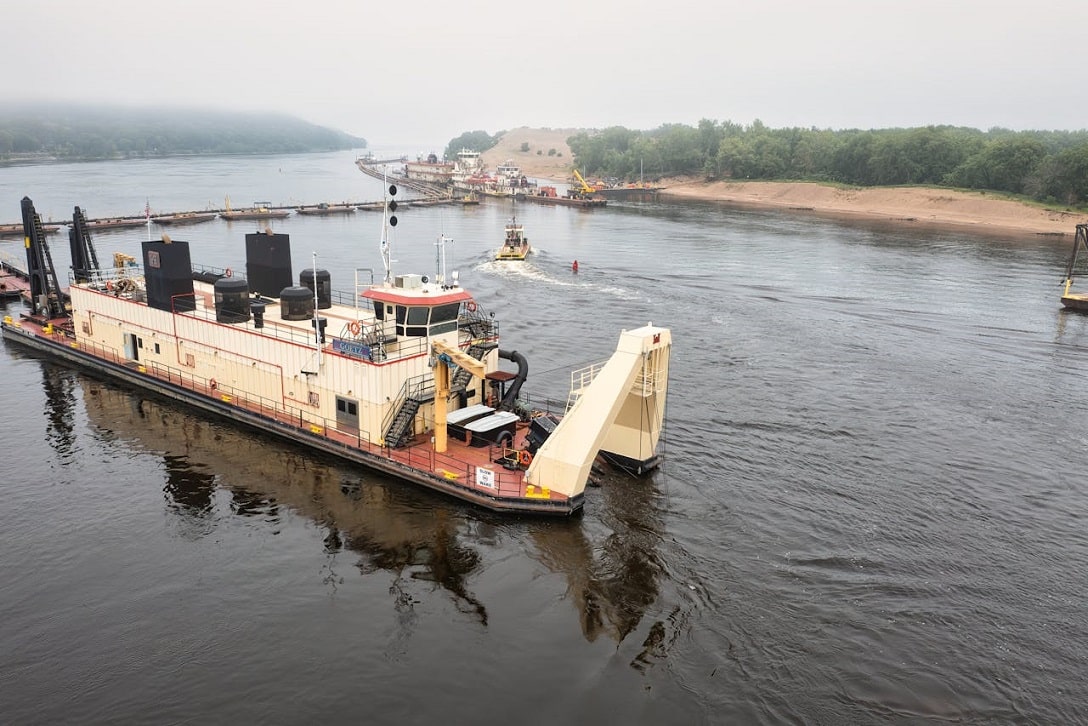The Role of Dredging in Sustainable Development:
In the global pursuit of sustainable development, the role of dredging in water infrastructure projects is becoming increasingly vital. Dredging, the process of excavating and removing sediment from waterways, harbors, and ports, plays a crucial role in maintaining navigable channels, managing flood risks, and supporting economic activities. However, the traditional approach to dredging has often raised environmental concerns due to its potential impacts on ecosystems and communities. In this article, we will explore the evolving role of dredging in sustainable infrastructure development and discuss how water infrastructure can be designed and implemented in a more sustainable and resilient manner, aligning with natural and socio-economic systems.
Dredging has traditionally been associated with negative environmental impacts, including habitat destruction, water quality degradation, and disturbance to aquatic ecosystems. However, when conducted responsibly and in alignment with sustainability principles, dredging can contribute to achieving multiple objectives of sustainable development.
- Ecosystem Restoration and Enhancement:
- Dredging can be utilized as a tool for ecosystem restoration and enhancement by removing pollutants and restoring natural habitats such as wetlands and mangroves.
- Through strategic dredging projects, degraded ecosystems can be revitalized, promoting biodiversity and ecosystem services that are essential for human well-being.
- Flood Risk Management:
- Properly managed dredging activities can help mitigate flood risks by increasing the capacity of waterways to carry excess water during heavy rainfall events.
- By maintaining clear and efficient drainage channels, dredging supports flood resilience in coastal and inland areas, protecting communities and infrastructure from inundation.
- Infrastructure Development and Maintenance:
- Dredging is indispensable for maintaining navigable channels in ports and harbors, facilitating maritime transportation and trade.
- In developing countries, dredging plays a crucial role in expanding and upgrading water infrastructure to support economic growth and development.
Designing Sustainable Water Infrastructure:
To ensure that water infrastructure projects are sustainable and resilient, it is essential to integrate environmental, social, and economic considerations into the planning, design, and implementation phases. Here are key strategies for designing sustainable water infrastructure:
- Comprehensive Environmental Impact Assessment (EIA):
- Conducting a thorough EIA prior to dredging projects helps identify potential environmental risks and impacts.
- By assessing the ecological, hydrological, and socio-economic factors, decision-makers can develop mitigation measures to minimize negative consequences and maximize environmental benefits.
- Adaptive Management Approach:
- Adopting an adaptive management approach allows for flexibility and responsiveness to changing environmental conditions and stakeholder feedback.
- Monitoring and evaluation mechanisms should be established to track the effectiveness of dredging activities and adjust management strategies accordingly.
- Nature-Based Solutions (NBS):
- Incorporating NBS, such as sediment management through natural processes, into dredging projects can enhance ecosystem resilience and reduce the need for extensive engineering interventions.
- NBS offer cost-effective and sustainable alternatives to conventional infrastructure, promoting ecosystem-based approaches to water management.
- Stakeholder Engagement and Community Participation:
- Meaningful engagement with stakeholders, including local communities, indigenous groups, and environmental organizations, is essential for building trust and ensuring social acceptance of dredging projects.
- Empowering communities to participate in decision-making processes fosters ownership and fosters a sense of responsibility towards shared water resources.
Conclusion:
Dredging plays a crucial role in the global drive towards more sustainable development by supporting ecosystem restoration, flood risk management, and infrastructure development. By adopting a holistic approach that considers environmental, social, and economic factors, water infrastructure can be designed and implemented in a manner that enhances resilience and aligns with natural systems. Embracing innovation, collaboration, and adaptive management principles will be key to navigating towards a greener future where dredging serves as a catalyst for sustainable development.
By prioritizing sustainability and embracing innovative approaches, the dredging industry can contribute to building a more resilient and equitable world, where water resources are managed wisely for the benefit of present and future generations.
